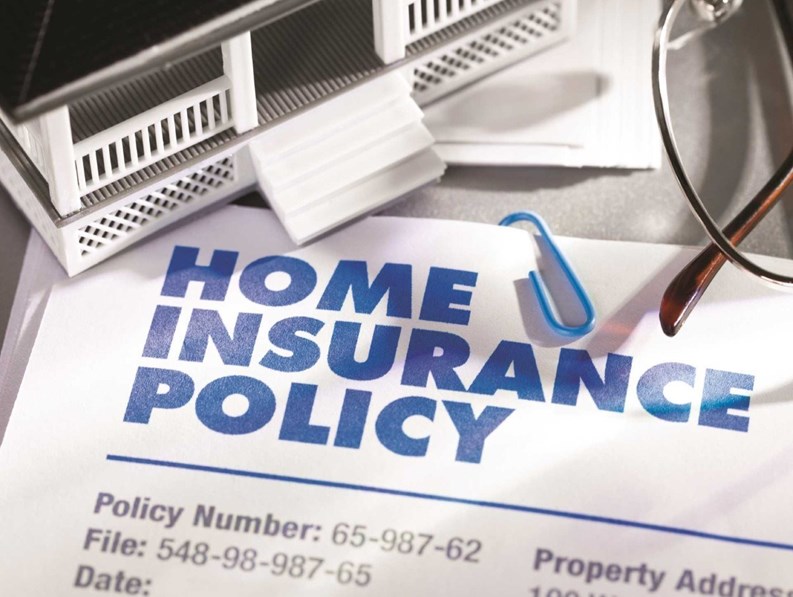I think there’s this mindset when they buy a condo that they’re not responsible for anything,” says Robert Masse of W.T. Phelan Insurance. As a quarter-century veteran of condo insurance, the Arlington, Massachusetts-based Masse has often seen the misunderstandings that surround the topic of HO-6 homeowner’s insurance.
“We get a lot of people who say, ‘My stuff’s really not worth much. I don’t want to buy an HO-6.’” Yet experts say such thinking entirely misses the point of proper condo homeowner coverage—insurance coverage that could prove crucial to both management and unit owners, if disaster strikes.
HO-6, the specific designation for homeowner’s coverage for condo properties, serves to insure the interior of an individual condo unit and the personal property contained therein. Mortgage holder requirements for this so-called “studs-in” coverage have grown more prevalent with the mortgage lender reforms of recent years. Yet, as experienced agents know, many unit owners not required to carry HO-6 have continued to shirk this crucial area of homeowner protection—a fact that can lead to frightful consequences for condo dwellers and community boards.
“They don’t think they need it,” says Brendon Kilcoyne, a Certified Insurance Counselor with the Watertown, Massachusetts agency H&K Insurance. “They assume their association has insurance, so they don’t need it.” It is this lack of up-front knowledge, particularly among first-time condo buyers, that insurance agents—as well as condo boards—must work hard to mitigate in the face of today’s changing housing market. “I find it mostly with homeowners who have moved from a single family home and are new to condo living,” says Jeffrey Grosser, vice president and principal of Rodman Insurance in Needham, Massachusetts. “And they wrongly believe everything they own is covered by the association policy.”
Deductibles Keep Rising
“The way condo insurance works,” Grosser explains,” is that, if I’m a unit owner, and I’m subject to damage as a part of a large claim, the association’s policy has a deductible. And I, as a unit owner, am responsible for absorbing my proportionate part of that deductible—if my unit is involved.” And such deductibles, say experts, are steadily climbing along with rising construction costs. “The master policy deductibles have been increasing, especially in the last ten years—up to five or ten thousand dollars. And the associations are increasingly accessing those deductibles.”
With such rising master policy deductible costs, management’s role is more important than ever in insuring their unit owners are well-covered—before disaster strikes—thus avoiding confusion and understandable ill-will on the part of condo residents. Otherwise, when a unit owner finds him- or herself embroiled in a condo insurance claim, without the protection of properly-written HO-6 coverage, the resulting expenses can often be eye-opening.
After all, for those inexperienced in condo life, the notion of maintenance-free living can lead to a false sense of security, wrongly causing homeowners to think they can “pass the buck” on nearly every aspect of their former responsibilities as single-family home dwellers. And, in most areas of condo life, such misconceptions aren’t likely to lead to financial ruin. But, in the case of HO-6 coverage, these misunderstandings can prove catastrophically costly. “I’ve had clients—whether there’d be water losses or fire—who’ve lost tens of thousands of dollars in personal property,” says Kilcoyne. “And there’s nowhere for them to go for that. It’s just gone.”
In truth, HO-6 is a crucial part of any unit owner’s arsenal of protection against financial hardship, loss-of-use, and liability concerns. Common HO-6 policy specifications include insurance against personal property loss, liability claims, and damage to condo unit improvements and upgrades. Such coverage is usually offered with low deductibles and is fairly inexpensive.
In addition to these commonly-considered aspects of homeowner’s insurance, HO-6 coverage includes one provision that, experts say, may well prove crucial in a condo disaster. “The homeowners policy includes something called ‘loss of use’ coverage,” explains Grosser. “So, if the homeowner is forced to live elsewhere while the unit is being rebuilt, the loss of use coverage under the HO-6 will indemnify them for their living expenses.”
The Bills Keep Coming
“What most people don’t understand,” notes Masse, “is that they have an exposure to additional living expenses. If a building they are in burns to the ground, you’d be surprised how many people don’t understand that they still need to pay their mortgage, they still need to pay their condo fees, and live somewhere else at the same time. So, the additional living expense coverage picks up those expenses over and above your normal expenses.”
In addition to “loss of use,” HO-6 can provide valued protection for second-home condo dwellers—those fair-weather unit owners who live in their units only part of the year, and rent them to third-parties during the rest. In these cases, HO-6 gives a crucial protection against renter damages. Such coverage can be especially useful in the case of vacation-area properties which may well be used as rental property throughout much of the calendar year. “There’s a vast majority of unit owners who own units, and rent them out, who don’t carry HO-6,” says Masse. “I find a very small portion of rented units where the unit owner has any coverage at all. And there’ s a surprising number who don’t require their renters to have any coverage.”
Experts say problems resulting from potential renter damage can cause untold headaches for unit owners, as well as management. With this in mind, board members should actively address topics surrounding rental units during their association’s regularly scheduled meetings. Such conversations may go a long way toward staving off confusion and conflict later. After all, many first-time condo owners who choose to operate their units as rental property will have had little to no experience in dealing with tenants. And while an owner of multi-unit investment properties would never consider leaving such assets unprotected, the newly-minted landlord may fail to consider the dangers involved in operating rental property without the proper coverage. Experts say the headaches averted by proper HO-6 coverage are well worth the cost. “I have one example of a unit that was rented. The renter drove through the underground garage door,” says Masse, “caused about $40,000 damage, and didn’t have a tenant’s policy. And the auto he was driving—just to make it a little more complicated—wasn’t his.”
Furthermore, the loss-of-use resulting from condo calamity may well mean lost rental income for unit owners—a touchy situation for borrowers who may be dependent on rental income to pay the monthly mortgage on their condo home-away-from-home. “People rely on this rental income as part of their income,” says Kilcoyne. “So, it can give you coverage for rental reimbursement in that scenario.”
Like it or not, experts say management must play the primary role in mitigating misconceptions when it comes to HO-6, so as to avoid costly coverage-related disasters before they occur. “I think it’s important to explain to unit owners and trustees where one insurance starts and one stops—especially with the different types of bylaws,” says Kilcoyne. “The general concept of HO-6 is an interplay between the association policy and the unit owner policy. They should work as almost one policy between two different parties to make sure everything is covered.”
For experienced agents—and the homeowners they represent—understanding and evaluating an association’s overall master policy is the most important area of concern in insuring proper HO-6 coverage. “It’s important that the broker writing the homeowners policy knows what the association coverage and deductible is,” says Grosser, “so they can write the homeowners policy properly and include enough dwelling coverage to respond to whatever deductible obligation the homeowner has. So it’s vitally important the homeowner’s policy and the association’s policy dovetail.”
In the end, say experts, the key to avoiding insurance-related headaches is open and detailed communication. “I think the biggest thing is keeping unit owners informed as to what they need,” remarks Kilcoyne, “whether that be through letters or the meetings. Just make sure they know that they need this, so they can’t come back to you and say, ‘I didn’t know I needed this policy.’ They can’t know something they didn’t already know, unless you tell them.”
Matthew Worley is a freelance writer and a frequent contributor to New England Condominium.







Leave a Comment